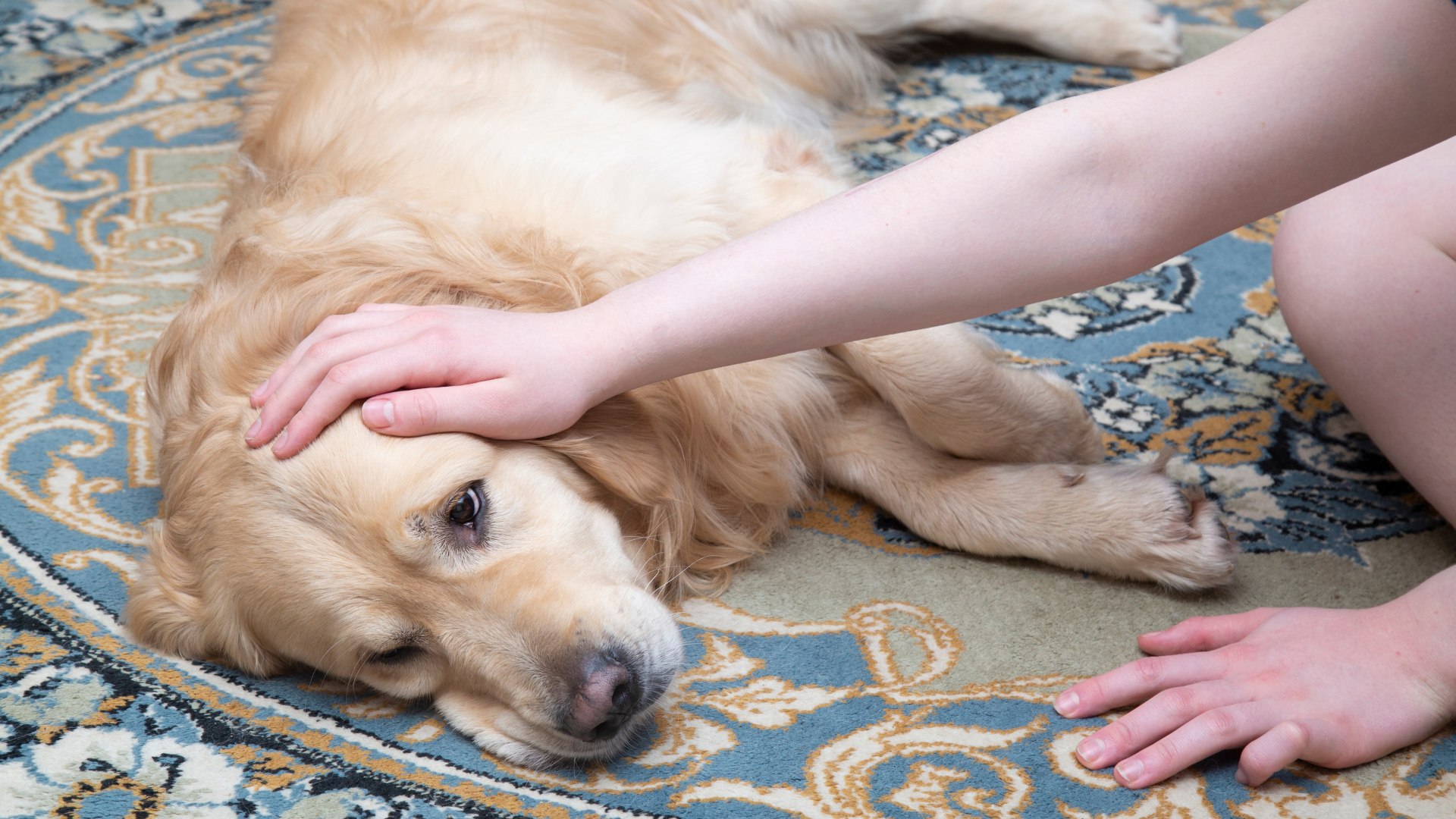Why is My Dog Shaking?

Determining the root cause of your dog's shaking can be a complex task, with possibilities ranging from simple excitement to serious health issues. This article will delve into the myriad reasons why your dog might be shaking, from harmless emotional responses to concerning medical conditions, and provide guidance on when it's time to consult a veterinarian.
Key Takeaways
- Shaking in dogs can be caused by a variety of factors, including emotional states like excitement or anxiety, environmental conditions such as cold, and attention-seeking behaviors.
- Certain medical issues, such as pain, distemper, poisoning, neurological disorders, and metabolic imbalances, can manifest as tremors or shaking in dogs.
- Understanding the difference between normal shaking and seizures is crucial, as seizures are a medical emergency that requires immediate veterinary care.
- Environmental and behavioral management can help reduce shaking in dogs, especially in cases related to old age or medication side effects.
- Observation is key; if shaking is persistent, intense, or accompanied by other symptoms, it's essential to seek veterinary attention promptly to ensure your dog's health and well-being.
Understanding Common and Benign Causes of Shaking
Excitement and Happiness
Dogs often shake or tremble when they are extremely excited or happy. This type of shaking is usually seen when you return home, during playtime, or when they anticipate something enjoyable, like a walk or a treat. It's a natural expression of their enthusiasm and should not be a cause for concern.
- When greeting their owners, dogs may wiggle and shake with joy.
- Playful activities can trigger a burst of energy, resulting in shaking.
- The anticipation of favorite activities, such as walks or mealtime, can also cause excitement tremors.
While this behavior is endearing and typically harmless, it's important to recognize the difference between shaking from joy and shaking due to stress or fear. Observing your dog's body language and the context of the situation can help you understand their emotional state.
Fear or Anxiety
Dogs, like humans, can experience fear and anxiety, which may lead to shaking. This behavior is a natural response to various stressors and can be triggered by loud noises, unfamiliar settings, or even separation from their owners. Boldly recognizing and addressing these triggers is essential for the well-being of your pet.
Common triggers for anxiety-induced shaking include:
- Loud noises such as thunderstorms or fireworks
- New environments or strangers
- Separation anxiety when away from their owners
- Specific fears, like visiting the vet
Anxiety in dogs is not uncommon, and understanding your dog's specific fears can help you create a more supportive environment. Behavioral modification techniques such as desensitization, counterconditioning, and positive reinforcement can be effective in managing anxiety.
If your dog's anxiety is severe, it may be necessary to consult a professional. A certified dog trainer or a veterinarian can provide guidance on creating a safe space and using appropriate training methods to alleviate your dog's fear and anxiety.
Cold Weather Response
Just as humans do, dogs may shiver as a natural response to cold temperatures. This physiological reaction helps to generate heat and raise the body temperature. If your dog is shaking during colder weather, providing warmth is key.
- Ensure your dog has a warm and cozy space away from drafts.
- Offer extra blankets or a doggy sweater for additional insulation.
- Increase indoor temperatures or provide a heated bed if necessary.
While it's normal for dogs to shiver in the cold, persistent shaking despite warming efforts could indicate a health issue and warrants a visit to the veterinarian.
Remember, short-term shaking due to cold is a normal canine behavior. However, if your dog continues to shake after being warmed up, or if the shaking is accompanied by other symptoms, it's important to seek veterinary advice.
Attention-Seeking Behavior
Dogs are intelligent creatures that may learn to shake as a way to garner attention from their owners. If your dog receives extra care or affection when exhibiting this behavior, they might repeat it to elicit the same response. To address this, owners should consider altering their reactions to discourage the behavior.
- Desensitization and counterconditioning: These techniques can help dogs become more comfortable with their triggers.
- Positive reinforcement training: Encourage and reward alternative, calm behaviors instead of shaking.
- Environmental adjustments: Strive to minimize stressors in your dog's surroundings to promote a peaceful atmosphere.
It's important to be consistent with your responses to your dog's shaking. If you're concerned that the behavior is not solely for attention, consult with a veterinarian to rule out other causes.
Recognizing When Shaking Indicates a Medical Issue
Pain-Related Tremors
Dogs may exhibit shaking or trembling as a response to pain, which can arise from various conditions. If your dog is shaking and showing other signs of distress, it may be experiencing significant discomfort.
Common causes of pain that can lead to tremors include:
- Injuries such as sprains, fractures, or internal damage
- Joint issues like arthritis
- Dental problems causing oral pain
- Abdominal discomfort from conditions like pancreatitis or gastrointestinal issues
Alongside shaking, you might notice your dog limping, showing reluctance to move, whimpering, adopting unusual postures, or displaying aggression when touched. These symptoms call for immediate veterinary attention to address the underlying pain.
It's crucial to observe your dog for any accompanying signs of pain and consult with a veterinarian in Orillia to determine the best course of action. Early intervention can prevent further discomfort and potential complications.
Signs of Distemper
Canine distemper is a serious disease that can lead to shaking, tremors, and seizures in dogs. Early detection and vaccination are crucial for the prevention and management of this condition. Symptoms of distemper can vary but often include:
- Fever
- Nasal discharge
- Coughing
- Vomiting
If your dog exhibits these symptoms, especially in combination with shaking or tremors, it is imperative to seek veterinary care immediately. Distemper can progress rapidly and affect the respiratory, gastrointestinal, and nervous systems.
While some symptoms may overlap with less serious conditions, the presence of multiple signs from this list warrants professional evaluation. Remember, shaking alone is not definitive of distemper, but it should not be ignored if accompanied by other symptoms.
Symptoms of Poisoning
When a dog is exposed to toxic substances, the symptoms can be alarming and require immediate attention. Ingestion of toxins often results in tremors, shaking, and unusual behavior, signaling an urgent need for veterinary care. Other signs of poisoning may include:
- Vomiting
- Diarrhea
- Disorientation
- Seizures
- Collapse
If you suspect your dog has ingested a poisonous substance, it is critical to act swiftly. Contact your veterinarian or an animal poison control center without delay.
Many common household items and foods are dangerous to dogs. Substances such as chocolate, antifreeze, xylitol, and certain plants can lead to severe health issues if consumed. Remember, the faster you respond to potential poisoning, the better the chances for your dog's recovery.
Generalized Tremor Syndrome (GTS)
Generalized Tremor Syndrome (GTS), also known as steroid responsive tremor syndrome or white shaker dog syndrome, is a condition that can cause a dog to experience full-body tremors. The exact cause of GTS is not well understood, but it is believed to be an immune-mediated condition.
GTS typically affects young to middle-aged dogs and can occur in any breed, although small, white dogs such as Maltese and West Highland White Terriers are more commonly affected.
The symptoms of GTS can often be managed with medications such as corticosteroids, which help reduce inflammation and suppress the immune system. It's important to note that each dog may respond differently to treatment, and ongoing veterinary care is crucial to manage this condition effectively.
- Diagnosis: Typically involves ruling out other causes of tremors.
- Treatment: Often includes corticosteroids and other immunosuppressive drugs.
- Prognosis: Can be good with proper management, but relapses may occur.
If your dog is diagnosed with GTS, regular follow-ups with your veterinarian are essential to monitor the effectiveness of treatment and adjust as necessary. Always consult your veterinarian before making any changes to your dog's medication or care plan.
Neurological Disorders
Neurological disorders in dogs, such as epilepsy, brain tumors, and encephalitis, can manifest as seizures, tremors, and disorientation. These conditions disrupt normal brain function and may result in unusual behavior. Early detection and management are crucial for the well-being of your pet.
Treatment options vary depending on the specific disorder but often include medications like anticonvulsants for seizure control. It's important to work closely with your veterinarian to determine the best course of action.
Remember, successfully treating your dog's condition depends on an accurate diagnosis and a tailored treatment plan.
In addition to medication, treating underlying illnesses such as distemper or kidney disease may involve supportive care or dietary changes. Always monitor for other symptoms that may accompany neurological issues, such as changes in appetite or energy levels.
Endocrine and Metabolic Imbalances
Endocrine and metabolic imbalances in dogs can manifest as shaking or tremors and are often indicative of underlying health issues. Hypoglycemia, or low blood sugar, is a common condition that can cause weakness and shaking, particularly in small-breed dogs. It's crucial to monitor for signs of lethargy or collapse, which may accompany these tremors.
Addison's disease, also known as hypoadrenocorticism, is another hormonal disorder that can result in shaking. Symptoms may include vomiting, diarrhea, and weakness. Similarly, severe kidney problems can lead to neurological symptoms due to toxin buildup in the bloodstream.
It is essential to observe your dog for any additional symptoms that may indicate a serious condition, such as changes in appetite, thirst, energy levels, and bathroom habits.
If you notice any of these signs, especially if they persist or worsen, it is imperative to seek veterinary care promptly to address potential endocrine or metabolic disorders.
Differentiating Between Shaking and Seizures
Characteristics of Normal Shaking
Normal shaking in dogs is typically short-lived and resolves once the trigger, such as excitement or cold, is removed. It's important to observe your dog's overall behavior during these episodes.
- Shaking is often accompanied by typical dog behaviors, indicating the dog's emotional state.
- For excitement: wagging tail, bright eyes, playful stance.
- For anxiety: tucked tail, lowered head, avoidance.
- For cold: seeking warmth, shivering that stops with increased temperature.
Pay attention to your dog's appetite and energy levels. Normal shaking shouldn't be accompanied by other concerning symptoms like vomiting or disorientation.
If shaking persists or is accompanied by unusual symptoms, it may not be a benign cause. Monitoring your dog's behavior and consulting with a veterinarian in Orillia or your local area can help ensure your pet's health and well-being.
Identifying Seizure Symptoms
Recognizing the signs of a seizure in your dog is crucial for their health and safety. Seizures manifest as a loss of consciousness, coupled with involuntary movements such as stiffening, jerking, or paddling. During a seizure, a dog may also experience drooling, chattering teeth, or even loss of bladder or bowel control. These symptoms starkly contrast with normal shaking or trembling, which typically occurs due to excitement, fear, or cold and does not involve unconsciousness.
It's essential to note the context in which the shaking occurs. If it's not related to excitement, fear, or temperature, and especially if accompanied by any of the aforementioned symptoms, it may be indicative of a seizure.
If you suspect your dog is having a seizure, it's important to remain calm and ensure they are in a safe space where they cannot injure themselves. Avoid touching their mouth or head to prevent accidental bites. After the seizure has passed, contact your veterinarian immediately for further guidance. Pine Grove Veterinary Hospital offers comprehensive services, including emergency vet services in Orillia, to address such urgent situations.
Immediate Steps to Take During a Seizure
If your dog begins to have a seizure, it's crucial to remain calm and ensure their safety. Do not attempt to restrain your dog or put anything in their mouth. Instead, follow these immediate steps:
- Clear the area of any objects that could harm your dog, such as sharp items or furniture.
- Gently slide a cushion or folded blanket under their head to prevent injury.
- Keep track of the seizure's duration and note any specific symptoms.
- Speak softly to your dog to provide reassurance, even if they seem unresponsive.
After the seizure has passed, keep your dog warm and quiet as they recover. Contact your veterinarian promptly to report the incident and seek further advice.
Remember, seizures can be a symptom of an underlying condition, and timely veterinary intervention is essential for your dog's health.
Managing Environmental and Behavioral Factors
Adjusting to Old Age
As dogs enter their senior years, they may begin to shake due to muscle weakness or the development of tremors, which are often a natural part of aging. Arthritis pain and cognitive decline can also contribute to this behavior, leading to disorientation and changes in their usual activities.
- Muscle weakness or tremors
- Arthritis pain
- Cognitive decline
- Disorientation
Senior dogs might exhibit a decrease in muscle mass, particularly in the back legs, making it difficult for them to maintain their normal activity levels. This can be especially noticeable in dogs with conditions like Cushing's disease, which can cause them to appear wobbly or have trouble standing up after lying down.
It's essential to monitor these age-related changes and provide your senior dog with the support they need. Adjustments to their environment and routine can help manage these symptoms and maintain their quality of life.
If you observe any significant changes in your dog's behavior or mobility, it's crucial to consult with a veterinarian in Orillia to ensure that any medical issues are properly addressed and managed.
Dealing with Medication Side Effects
When managing your dog's health, it's crucial to be aware of the potential side effects of medications. Never discontinue a prescribed medication without consulting your veterinarian. They can provide guidance on whether the medication's benefits outweigh the side effects or if alternative treatments should be considered.
Medications such as Selegiline, Ketoconazole, or Melatonin may cause side effects like decreased appetite, lethargy, weakness, vomiting, or ataxia (unsteady gait). If you observe these symptoms, it's essential to contact your vet for advice.
Trust your instincts and monitor your dog closely. If you notice persistent issues, such as changes in appetite or behavior, these could be signs that the medication is not agreeing with your pet. Regular observation can help manage chronic conditions and prevent complications.
Here are some questions to consider when monitoring your dog's reaction to medication:
- Is there a change in eating habits?
- Are there any new or worsening symptoms?
- How is your dog's overall energy level?
- Does your dog seem uncomfortable or in distress?
Creating a Calm and Safe Environment
Creating a calm and safe environment for your dog is essential in managing both behavioral and environmental factors that can lead to shaking. A predictable routine and a quiet space can significantly reduce stress-related shaking.
- Desensitization and counterconditioning: Gradually expose your dog to stressors in a controlled way to reduce their reaction over time.
- Positive reinforcement training: Reward your dog for calm behavior to encourage a peaceful demeanor.
- Environmental changes: Arrange your home to minimize stressors, such as having a dedicated safe space for your dog to retreat.
Remember, consistency is key. Regularly practicing these strategies can help your dog learn to cope with stress and reduce shaking.
If shaking persists despite creating a supportive environment, it may be time to consult a veterinarian. They can help determine if there are underlying medical issues that need to be addressed.
When to Consult Your Veterinarian
Observing Persistent or Intense Shaking
When your dog exhibits persistent or intense shaking, it's crucial to monitor the situation closely. Persistent shaking can be a sign of distress or an underlying health issue that requires attention. Here are some steps to follow:
- Keep a record of the shaking episodes, noting the duration, frequency, and any triggers you observe.
- Assess your dog's overall behavior and look for other symptoms such as lethargy, loss of appetite, or changes in bathroom habits.
- Consider environmental factors that may be contributing to your dog's stress or discomfort.
It's essential to differentiate between occasional, harmless shaking and persistent shaking that could indicate a more serious condition. Your observations will be invaluable when discussing your dog's health with a veterinarian.
If the shaking is accompanied by other concerning symptoms or if it doesn't subside, it's time to consult your veterinarian. They can help determine whether the shaking is due to a benign cause or if it's a symptom of a more serious health issue. Early intervention can be critical for your dog's well-being.
Understanding the Importance of Timely Intervention
Recognizing when your dog's shaking requires immediate veterinary attention is crucial. Delaying a consultation can exacerbate underlying conditions, leading to more severe health issues or even reducing the chances of a full recovery. It's important to monitor your dog's symptoms and behavior closely, and to understand which signs warrant a prompt visit to the vet.
- Sudden onset of intense shaking
- Shaking accompanied by other symptoms (e.g., vomiting, diarrhea, lethargy)
- Changes in appetite or thirst
- Uncharacteristic aggression or withdrawal
- Persistent shaking that doesn't subside with comfort or warmth
Timely intervention can make a significant difference in your dog's prognosis. Acting quickly ensures that your pet receives the necessary care before conditions worsen.
If you notice any of these symptoms, or if your dog's shaking seems out of the ordinary, don't hesitate to contact your veterinarian in Orillia. They can provide guidance on whether your dog needs to be seen immediately or if monitoring at home is appropriate. Remember, it's better to be cautious and seek professional advice than to regret not acting sooner.
Preparing for a Veterinary Visit
When the time comes to visit your veterinarian, being well-prepared can make the process smoother for both you and your pet. Ensure all relevant medical records are organized and ready to present, including any previous test results and medications your dog is currently taking.
Here's a checklist to help you prepare for the visit:
- Recent symptoms and changes in behavior
- A list of current medications and dosages
- Any previous diagnoses or treatments
- Questions or concerns you may have
Remember, your veterinarian is your partner in managing your dog's health. Open communication and thorough preparation are key to effective care.
After the visit, it's crucial to follow your vet's recommendations and schedule follow-up appointments as needed. This may include periodic examinations and bloodwork to monitor your dog's response to treatment and adjust medications accordingly. Keep in mind that managing your dog's health may require a commitment of time and resources, but it is essential for their well-being.
Knowing when to seek professional veterinary care for your beloved pet can be crucial for their health and well-being. At Pine Grove Veterinary Hospital, we understand the importance of timely medical attention. Whether it's for preventive care, nutritional counselling, or more urgent medical services, our compassionate team is here to support you and your pet. Don't hesitate to reach out to us for guidance or to schedule an appointment. Visit our website to learn more about our services and to request an appointment with our dedicated professionals.
Frequently Asked Questions
Share this article by using the icons below!










